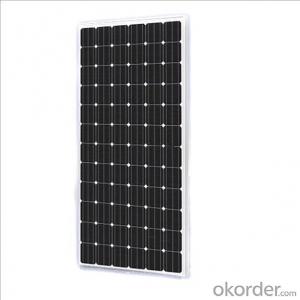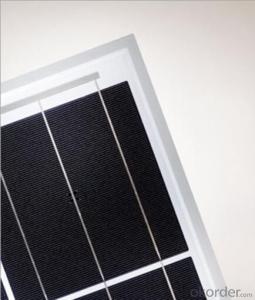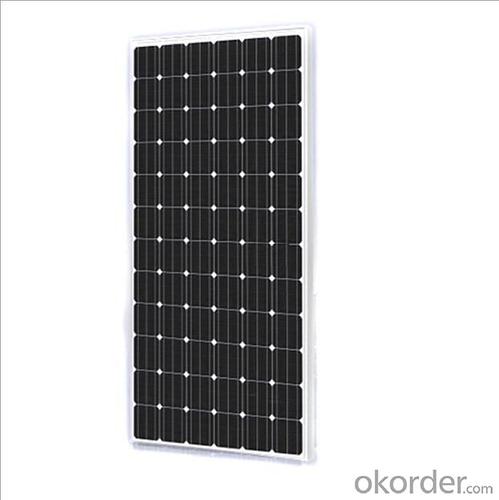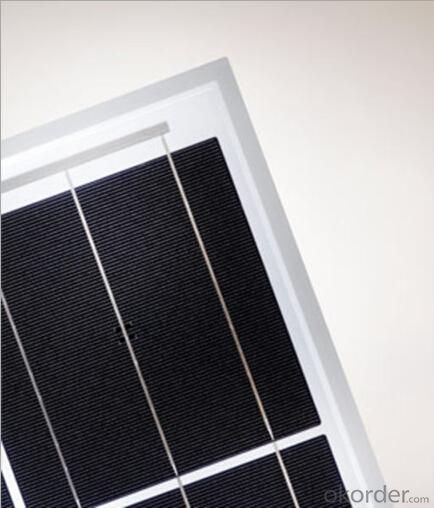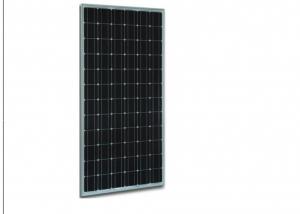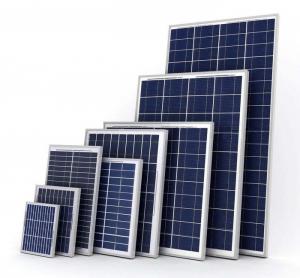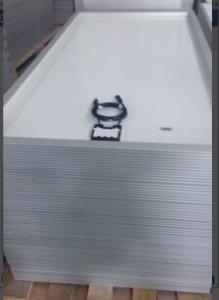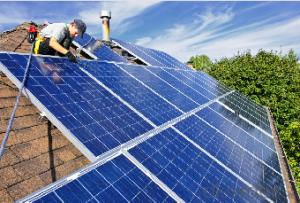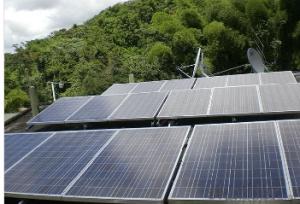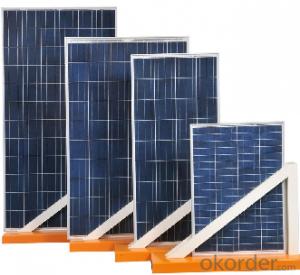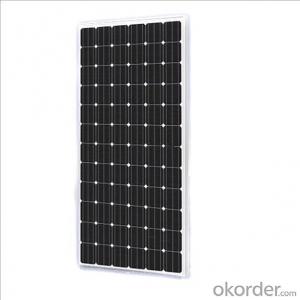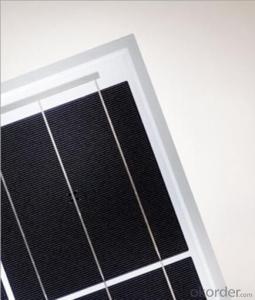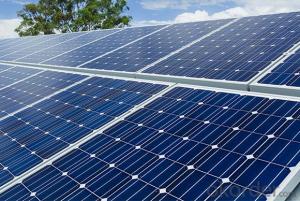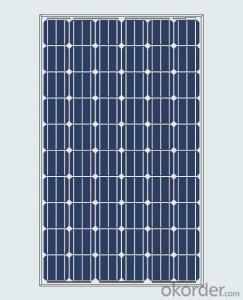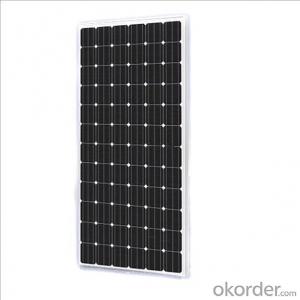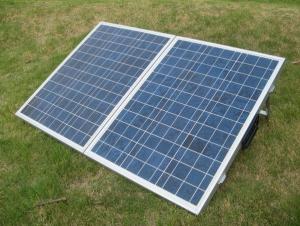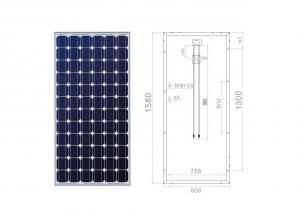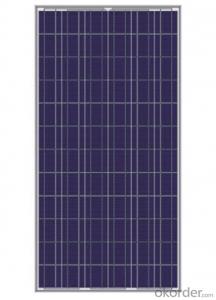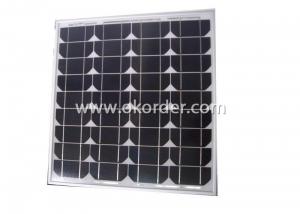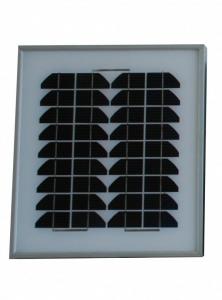Solar Panels Sahara - Mono-Crystalline Solar Module 270W-300W
- Loading Port:
- China Main Port
- Payment Terms:
- TT OR LC
- Min Order Qty:
- -
- Supply Capability:
- -
OKorder Service Pledge
OKorder Financial Service
You Might Also Like
Specifications
Solar panel pv module manufacturer
High efficiency: mono panel 18% poly panel 17%
30W-300W mono solar panel poly solar module
Mono-crystalline Solar Panel / Poly-crystalline Solar Panel
We Are Manufacturer
We manufacture mono solar panel and poly solar panel from 30W-300W
We produce Solar PV module from solar cell to solar module
We are capable to produce 2MW solar panels per month
Warranty
5 years material and workmanship warranty
10 years at 90% of the minimal rated power output
25 years at 80% of the minimal rated power output
Specifications
Electrical Spec. | Pmax | 240W |
Vmp | 35V | |
Imp | 6.86A | |
Voc | 43V | |
Isc | 7.77A | |
Physical Spec. | Cell Material | Poly |
Wind Resistance | 60m/s | |
Surf. Load-bearing | 200kg/m2 | |
Hail Load-capacity | 25mm, 80km/h | |
Packaging Data | Dimensions (mm) | 990*1600*35 |
Weight | 25kg | |
20’ Container | 224pcs | |
40’ Container | 448pcs | |
Temp. Coefficients (TC) | NOCT | 45°C±2°C |
Current TC | 0.06±0.01%/K | |
Voltage TC | -(155±10)mV/K | |
Power TC | -(0.5±0.05)%/K |
Product Details
Advanced EVA encapsulation system with triple-layer back sheet meets the most stringent safety requirements for high-voltage operation
Anodized aluminum frame: The sturdy, anodized aluminum frame allows the modules to be mounted on a variety of standard racking systems and to withstand harshest conditions
Ultra reliable bypass diodes prevent damage through overheating due to shaded or defective cells
Packing method: Innovative, environmentally friendly packing method using pile-edges insures modules arrive in perfect condition
New frame design incorporating hexagonal shaped Drainage holes, with more grounding holes, provide flexible installation and using
Waterproof Battery Box
Waterproof battery box, ideal for high humidity area
Air-bleed vent design, specially for gel and lead acid battery
High strength: PVC plastic box and wire reinforced PVC conduit
| | ||||||
| | | | | | | |
| | | | | | | |
| | | | | | | |
| | | | | | | |
| | | | | | | |
| | | | | | | |
| | | | | | | |
| | | |||||
| | | |||||
| | | |||||
| | | |||||
| | | |||||
| | ||||||
| | | | | | | |
| | | |||||
| | | |||||
| | | |||||
| | | |||||
| | | |||||
| | | |||||
| | | |||||
| | | |||||
| | ||||||
| | | |||||
| | | |||||
| | | |||||
| | | |||||
| | | |||||
- Q: I heard that solar energy has a lot of advantages but are there any drawbacks in using the solar panels?
- The major drawbacks are the high cost with low power payback. Also, the sun isn't shining for a good share of the time. life span is 20-30 years and then you have to spend the money all over again. It's cheaper to use public utilities for power, but not as green.
- Q: I jotted down some notes for my Technology and Architecture class and I'm trying to figure out what i meant when i said 'Treated with gases at extremely high temperatures.' I have NO idea what I was talking about :) Im trying to figure out if what I am talking about is about Silicon, Polychristaline, or a Solar Cell/Panel.
- Build okorder /
- Q: Can solar panels be installed on swimming pools?
- Yes, solar panels can be installed on swimming pools to harness the sun's energy and heat the water. These panels, often called solar pool heaters, are specifically designed to capture solar energy and transfer it to the pool water, providing an energy-efficient and cost-effective way to maintain a comfortable swimming temperature.
- Q: i want to join multiple solar panels into a bank so i only need one length of wire, i am going to use diodes to stop them sending power back into the one before it. is this ok or do i need something else?
- Check out some of the videos on YouTube on this subject.
- Q: Can solar panels be installed on a flat roof?
- Yes, solar panels can be installed on a flat roof. Flat roofs are actually a popular choice for solar panel installations because they provide an ideal surface for mounting the panels. The panels can be mounted using ballasted systems, which don't require any penetrations into the roof. This makes the installation process easier and minimizes any potential damage to the roof.
- Q: Can solar panels be installed in areas with high levels of air pollution?
- Yes, solar panels can be installed in areas with high levels of air pollution. Although air pollution may slightly reduce the efficiency of solar panels, they can still generate electricity even in polluted environments. Regular maintenance and cleaning of the panels can help mitigate the impact of air pollution on their performance. Additionally, using advanced technologies and materials in the design of solar panels can also enhance their resilience to air pollution.
- Q: How do I clean my solar panels?
- To clean your solar panels, start by turning off the system and ensuring the panels are cool to touch. Use a soft brush or sponge with mild detergent mixed in water to gently scrub away any debris or dirt. Rinse the panels with clean water and allow them to dry naturally. Avoid using abrasive materials or harsh chemicals, as they may damage the panels. Additionally, be cautious when working at heights and consider seeking professional help if needed.
- Q: What sort of maintenance is required for solar panels....?
- All panels should be cleaned to function best. Brush or wash off dirt and leaves. They should be checked for structural integrity and lack of rust. Solar Thermal panels should be checked for signs of leaks and/or discharge from pressure relief valves. Solar Photovoltaic should be checked for electrical function and grounding.
- Q: Can solar panels be used to power a satellite?
- Yes, solar panels can be used to power a satellite. Solar panels convert sunlight into electricity, which can then be used to power various systems and instruments on board a satellite. The panels are typically positioned in such a way that they can receive maximum sunlight and generate sufficient power to meet the satellite's energy requirements.
- Q: Can solar panels be used to power a water pump?
- Yes, solar panels can be used to power a water pump. Solar panels convert sunlight into electricity, which can be used to power various devices and appliances, including water pumps. This allows for a sustainable and environmentally friendly way to pump water without relying on traditional energy sources.
Send your message to us
Solar Panels Sahara - Mono-Crystalline Solar Module 270W-300W
- Loading Port:
- China Main Port
- Payment Terms:
- TT OR LC
- Min Order Qty:
- -
- Supply Capability:
- -
OKorder Service Pledge
OKorder Financial Service
Similar products
Hot products
Hot Searches
Related keywords
